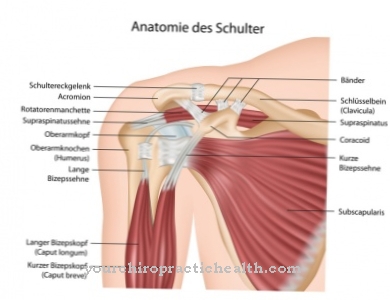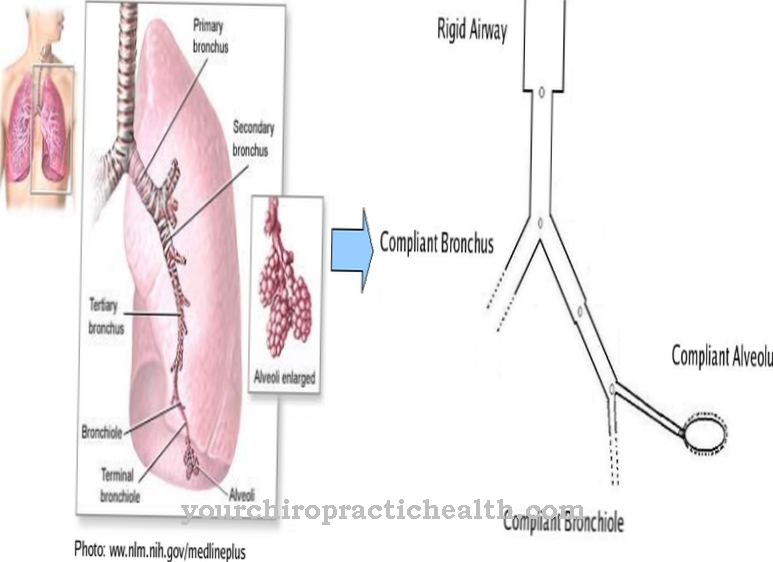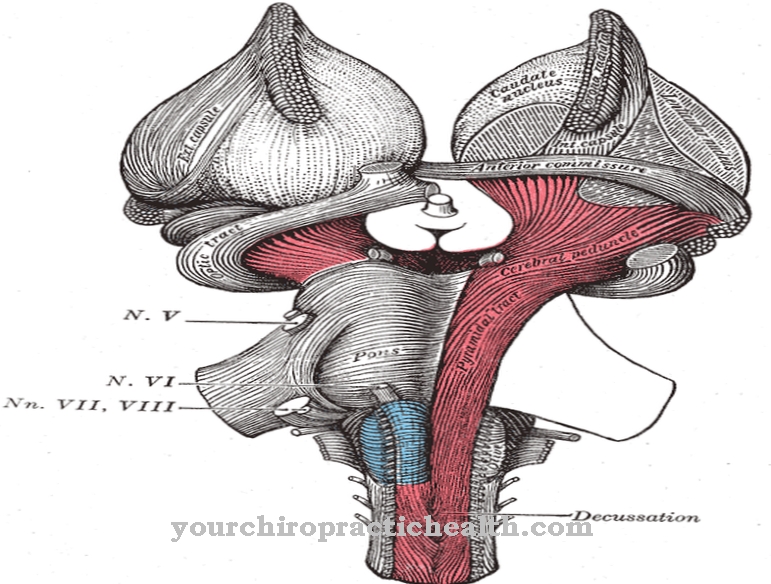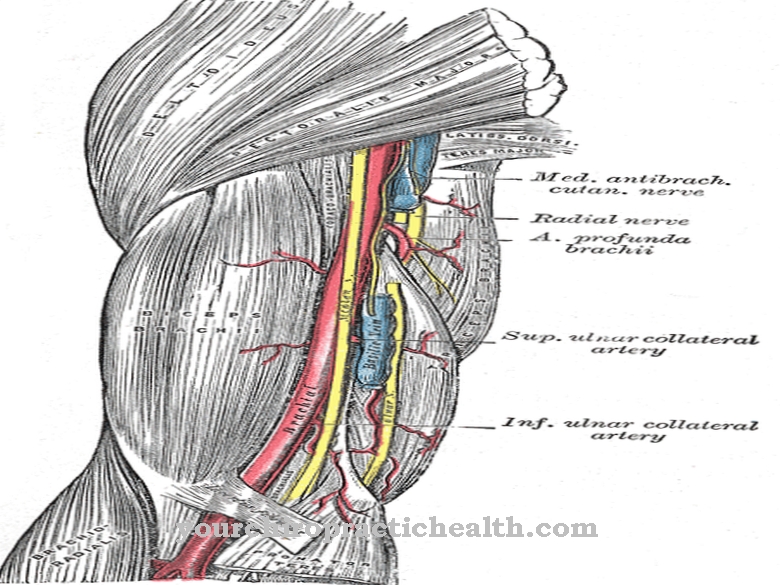As Liquor is the term used to describe the body fluid that constantly flows around the brain and spinal cord in the so-called inner and outer liquor space. It is a system of interconnected cavities. The liquor is renewed up to four times a day in a continuous production and resorption process. An important main function is to protect the brain against vibrations. The extent to which nutritional and other metabolic processes play a role in nerve tissue has not yet been conclusively researched.
What is liquor?
Of the Cerebrospinal fluid - as the full name goes - washes around the cerebrum, the diencephalon and the spinal cord in special cavities that are connected to one another like communicating tubes. The cavities can be divided into an inner and an outer liquor space.
The inner liquor space is formed by so-called ventricles, which are partially covered with a plexus of veins, the Choroid plexus, from which the fluid is constantly being formed and released into the ventricles.So that the volume and pressure of the circulating liquor remains constant, the normally crystal-clear liquid diffuses through special villi (arachnoid villi) on the walls of the outer liquor space into the venous blood and is transported away by veins for further processing.
The rate of production and absorption must reach the same values. A special blood-liquor barrier prevents venous blood from entering the external liquor space via the arachnoid villi. Below the top of the skull, the liquor envelops the cerebrum in a thin layer between the two soft meninges - comparable to a gel-padded inner protective helmet.
composition
The cerebrospinal fluid - also known as cerebrospinal fluid - is a normally crystal-clear, colorless fluid that contains only a few cells and whose glucose concentration of 2.7 to 4.8 mmol / l is well below normal blood values. The protein content is 0.15 to 0.45 g / l below that of blood serum, the protein content of which is more than two hundred times higher.
The CSF is generated in the inner CSF space in the walls of the four ventricles and flows slowly through special connection points (foramina) to one of the outer CSF spaces, in order to finally return to the bloodstream via the arachnoid villi.
The inner liquor space consists of the two lateral ventricles in the cerebrum with a pronounced geometry with anterior, posterior and lower horn as well as a middle part, the third ventricle in the diencephalon and the fourth ventricle, which runs further below in the rhombencephalon or hindbrain. The fourth ventricle is connected to the external liquor space via a total of three openings through which the cerebrospinal fluid can pass into the external liquor space.
Function & tasks
Probably the most important task of the cerebrospinal fluid is its mechanical-hydraulic protective function of the brain. The outer liquor space is of particular importance. Below the top of the skull, the liquor circulates between the two soft meninges, the pia mater and the arachnoid mater, and forms a kind of gel pad that protects the brain - especially the cerebrum - from vibrations that affect the head or the skull.
Since the brain is largely surrounded by liquor, it virtually floats up, so that the "pressure surface" of the brain to compensate for gravity or other acceleration is evenly distributed in any direction and protects the brain from punctual and one-sided mechanical pressure loads that are too serious Could lead to consequences.
To what extent the liquor contributes to the supply of the nerve cells with nutrients or other physiologically effective substances has not yet been conclusively clarified. The relatively high reproduction rate of the cerebrospinal fluid could be an indication that the liquor absorbs and removes degradation products from the metabolism of the nerve cells.
Liquor is also the starting substance for the perilymph in the inner ear (Scala tympani) and in the balance organs (Scala vestibuli). The perilymph is similar to the CSF in its electrolyte composition, and the outer CSF space is above the perilymph space Perilymphatic duct in connection.Ailments & illnesses
Symptoms and illnesses that are directly related to the cerebrospinal fluid are given when the reproductive and resorption rates of the CSF no longer match. Disorders of the equilibrium within the CSF balance can be triggered by diseases or the disorders themselves can cause other diseases.
In the event of an increase in the total volume of the circulating CSF, the pressure of the fluid in the CSF spaces increases with serious effects. An excessive increase in fluid can be caused by cerebral edema, inflammatory processes in the brain as well as, for example, a strong oversupply of vitamin A (hypervitaminosis A).
The increase in pressure can also be caused by brain tumors which, due to their physical dimensions, take up space and thus increase the pressure. A shift in the equilibrium due to disturbance of the CSF outflow or absorption is also known and can trigger increased pressure in the CSF spaces.
A reduced CSF outflow can be caused, for example, by a congenital malformation, by sticking of the meninges or by a disruption of the transition from the inner to the outer CSF spaces. In addition to general symptoms such as headache and vomiting, the most important indication of increased CSF pressure or intracranial pressure is the development of edema in the tissue of the optic nerve papilla.
At an advanced stage, paralysis of the eye muscles, dizziness, as well as breathing and impaired consciousness, which can lead to coma. If the outflow of the liquor is permanently disturbed, a so-called hydrocephalus can form due to the increased pressure in the liquor spaces. It is a serious disease that can often be traced back to developmental disorders and genetic defects.
























.jpg)



